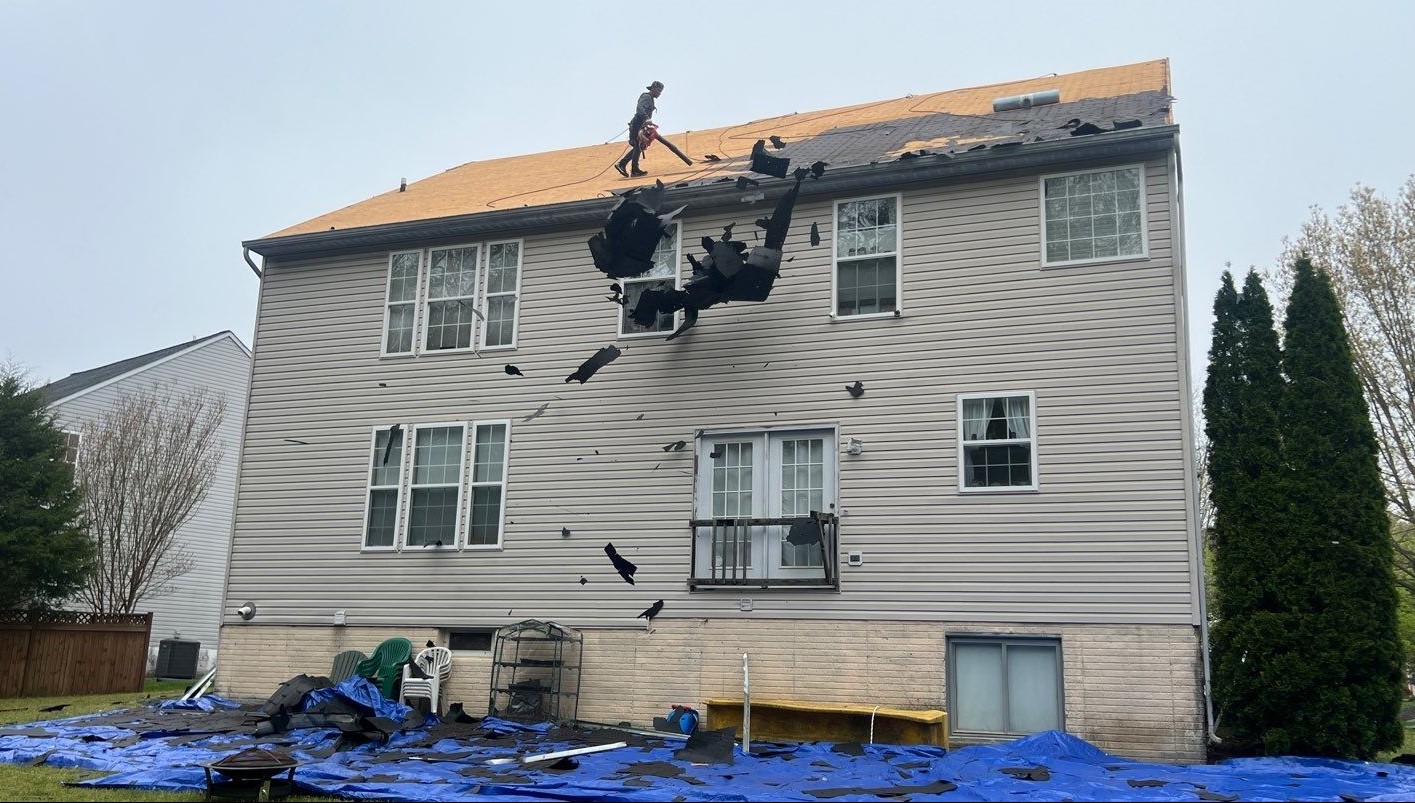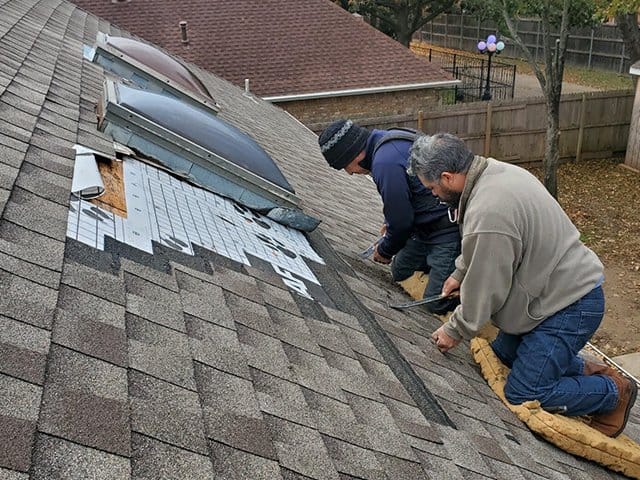Roofers Oahu: Expert Roof Installations and Repair Works
Roofers Oahu: Expert Roof Installations and Repair Works
Blog Article
Understanding the Various Types of Roofing Systems: A Comprehensive Overview for Homeowners
With a variety of alternatives-- ranging from the standard gable to the modern level-- each type offers unique advantages and challenges that need to line up with the home owner's environmental considerations and specific needs. As we explore the complexities of different roofing system kinds, it becomes apparent that one dimension does not fit all; the appropriate selection might amaze you.
Saddleback Roof
Gable roofs, defined by their triangular form, are among the most prominent roofing designs because of their simplicity and effectiveness in shedding water and snow. This style includes two sloping sides that meet at a ridge, permitting reliable drain and decreasing the threat of water build-up. The steep pitch typically connected with saddleback roofs improves their capacity to handle heavy precipitation, making them appropriate for numerous environments.
Along with their useful benefits, saddleback roofs use visual convenience. They can be adapted to different building designs, from typical to modern homes. The layout can additionally accommodate added attributes such as dormer home windows, which boost natural light and air flow in the attic space.
Moreover, gable roofs supply adequate space for insulation, adding to power performance. Property owners can select from a variety of roof covering products, including asphalt shingles, steel, and tiles, additionally improving modification choices.
In spite of their benefits, saddleback roofs might need added assistance in locations prone to high winds or hefty snowfall. Overall, the saddleback roof continues to be a favored choice as a result of its blend of capability, durability, and aesthetic allure.
Apartment Roofs
Flat roof coverings are frequently identified for their minimal style and useful applications, particularly in industrial and industrial settings (oahu roofing). These roofs include a nearly horizontal or straight surface, which permits easy building and construction and versatile room application. While they may lack the aesthetic charm of pitched roofs, level roof coverings use various advantages, especially in city environments where making the most of room is critical
Among the main advantages of level roofings is their ease of access. Home owners can use the roof covering room for various objectives, such as rooftop gardens, balconies, or photovoltaic panel installations. Furthermore, level roofings are typically a lot more economical to set up and preserve compared to their sloped counterparts, as they call for fewer products and labor.
Usual materials utilized for flat roof coverings consist of built-up roof (BUR), changed asphalt, and single-ply membranes, each offering distinctive benefits. Generally, flat roofings serve as a versatile and practical choice for several house owners and services alike.
Hip Roofs
Hip roof coverings are identified by their sloped sides that assemble at the top, forming a ridge. This design is distinct from saddleback roofs, as all 4 sides of a hip roof covering incline downwards toward the walls, giving a much more steady framework. The angle of the inclines can differ, allowing for adaptability in building aesthetic appeals and capability.
One of the primary advantages of hip roofings is anonymous their ability to endure heavy winds and unfavorable weather. The sloped surface areas allow far better water drain, lowering the danger of leaks and water damages. Additionally, hip roofing systems provide raised attic area, which can be utilized for storage space or perhaps converted right into livable locations.
However, constructing a hip roof covering can be a lot more complex and pricey than easier roofing types, such as saddleback roofs. The added product and labor associated with developing the inclines and ensuring proper architectural integrity can cause greater costs. In spite of these downsides, numerous property owners prefer hip roof coverings for their toughness, aesthetic charm, and potential for energy efficiency.
Mansard Roofing Systems
Mansard roofing systems, frequently recognized by their special four-sided layout, function 2 inclines on each side, with the lower slope being steeper than the upper. This architectural design, originating from France in the 17th century, is not only visually enticing yet useful, as it optimizes the functional room in the upper floors of a building. The steep lower incline enables more clearance, making it an ideal choice for lofts or attic rooms, which can be exchanged living areas.
Mansard roof coverings are defined by their convenience, suiting numerous building designs, from conventional to contemporary. They can be constructed with different materials, consisting of asphalt roof shingles, slate, or steel, offering property owners with a variety of choices to suit their choices and budgets. In addition, the style permits the integration of dormer home windows, boosting all-natural light and ventilation in the upper levels.
However, it is necessary to take into consideration the possible drawbacks. Mansard roof coverings might need more maintenance as a result of the complexity of their design, and their high slopes can be challenging for snow and rainfall runoff. In general, mansard roofings incorporate sophistication with practicality, making them a preferred selection among home owners seeking unique architectural attributes.
Lost Roofings
As home owners increasingly seek simplicity and functionality in their architectural styles, shed roof coverings have actually become a popular option. Identified by a single sloping aircraft, a shed roofing provides a minimal aesthetic that complements numerous home styles, from contemporary to rustic.
One of the main advantages of a shed roof is its uncomplicated building and construction, which commonly converts to lower labor and product costs. This layout permits for effective water drainage, lowering the danger of leaks and water damage. Additionally, the upright incline provides enough space for skylights, boosting all-natural light within the interior.
Shed roofs likewise provide versatility in regards to use. They can be here properly integrated into enhancements, garages, or outdoor structures like sheds and pavilions. Moreover, this roofing system design can fit numerous roofing products, consisting of metal, asphalt tiles, or perhaps eco-friendly roof coverings, lining up with eco-friendly initiatives.
Nevertheless, it is necessary to consider regional environment conditions, as hefty snow tons may necessitate adjustments to the roof covering's angle or structure. Generally, lost roof coverings offer a useful and cosmetically pleasing option for home owners looking to maximize capability without compromising style.
Final Thought


Gable roofing systems, characterized by their triangular form, are among the most popular roof designs due to their simpleness and effectiveness in losing water and snow. oahu roofing. The steep pitch generally connected with gable roofings improves their capacity to handle heavy precipitation, making them suitable for various climates
While they may do not have the visual charm of pitched roofing systems, level roofs provide many benefits, especially in city atmospheres where maximizing space is vital.

Report this page